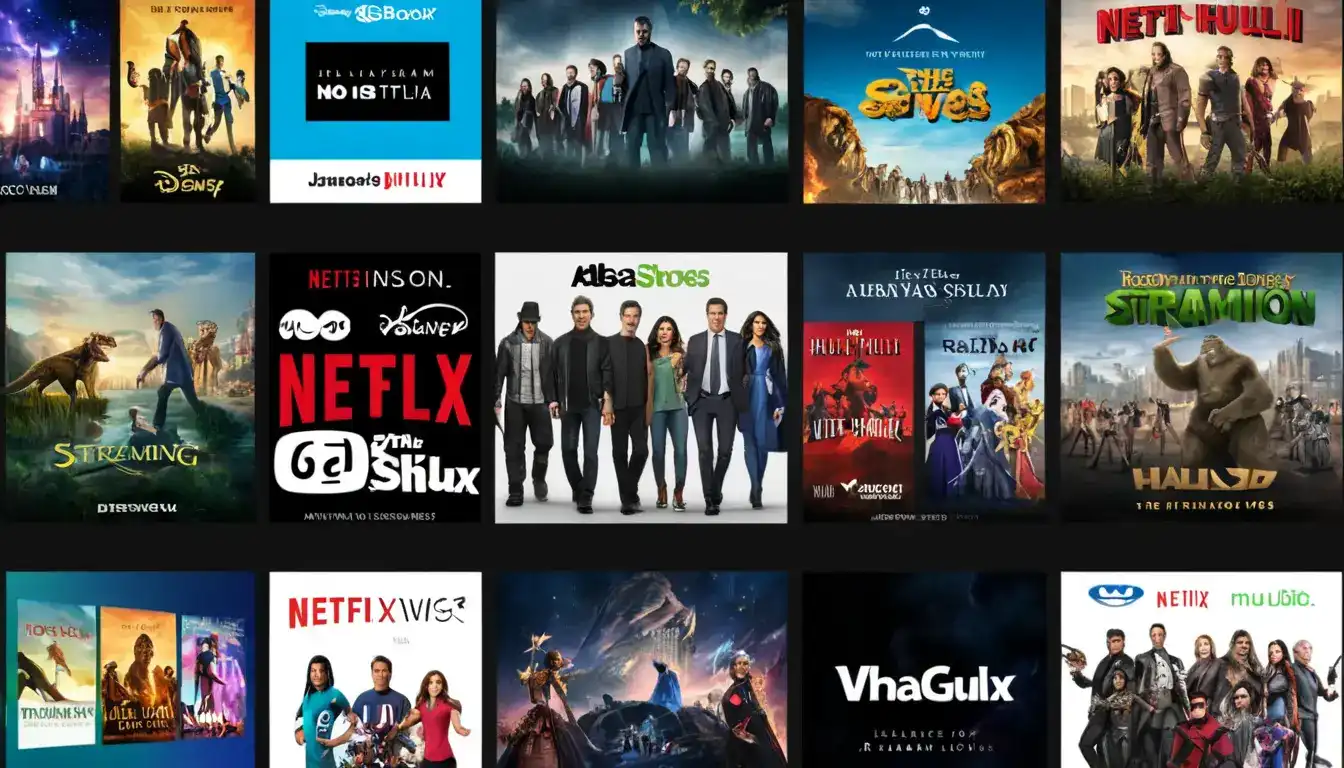Tips for Utilizing Social Media to Increase Brand Awareness of Your Business
Emily Willis

Photo: Tips for Utilizing Social Media to Increase Brand Awareness of Your Business
Social media has become an indispensable tool for businesses looking to expand their reach and build brand awareness. By leveraging these platforms effectively, you can connect with your target audience, create meaningful relationships, and drive business growth. Let's explore some strategies to help you maximize your social media presence.
Understanding Your Target Audience
Before diving into social media marketing, it's crucial to have a clear understanding of your target audience. By knowing who you're trying to reach, you can tailor your content and messaging accordingly.
- Identify your ideal customer: Create detailed buyer personas to represent your target audience.
- Understand their online behavior: Research where your target audience spends their time on social media.
- Analyze competitors: Study how your competitors are using social media to reach their audience.
Choosing the Right Platforms
With numerous social media platforms available, it's essential to focus on the ones where your target audience is most active.
- Research popular platforms: Identify the social media platforms that align with your target audience's demographics and interests.
- Consider your brand image: Choose platforms that complement your brand's personality and messaging.
- Evaluate your resources: Assess your team's capabilities and available resources to manage multiple platforms effectively.
Creating Engaging Content
High-quality content is the cornerstone of successful social media marketing. By creating content that resonates with your audience, you can capture their attention and build brand loyalty.
- Know your audience's interests: Create content that aligns with your audience's needs, desires, and preferences.
- Use visuals: Incorporate eye-catching images, videos, and infographics to enhance your content.
- Tell stories: Share your brand's story and connect with your audience on an emotional level.
- Use relevant hashtags: Increase your content's visibility by using relevant and popular hashtags.
- Consistency is key: Maintain a consistent posting schedule to keep your audience engaged.
Building a Strong Brand Identity
Your social media presence should reflect your brand's personality and values. Consistency in branding across all platforms is crucial for building a strong brand image.
- Develop a brand style guide: Define your brand's visual identity, tone of voice, and messaging.
- Create a consistent look and feel: Use the same branding elements across all social media profiles.
- Tell your brand story: Share your brand's mission, values, and story through your social media content.
Engaging with Your Audience
Social media is a two-way conversation. Engaging with your audience is essential for building relationships and fostering brand loyalty.
- Respond to comments and messages: Show your audience that you value their input and feedback.
- Join relevant conversations: Participate in discussions related to your industry or niche.
- Run contests and giveaways: Encourage audience participation and generate excitement.
- Collaborate with influencers: Partner with influencers in your industry to reach a wider audience.
Leveraging Social Media Advertising
Paid social media advertising can help you reach a wider audience and achieve specific marketing goals.
- Define your target audience: Create detailed audience profiles to target your ads effectively.
- Choose the right ad formats: Select ad formats that align with your marketing objectives and budget.
- Track and analyze performance: Monitor ad performance and make adjustments as needed.
Measuring and Analyzing Your Performance
To optimize your social media efforts, it's essential to track and analyze your performance.
- Set clear goals: Define specific objectives for your social media marketing campaigns.
- Use analytics tools: Utilize social media analytics platforms to measure engagement, reach, and conversions.
- Track key performance indicators (KPIs): Monitor relevant metrics such as likes, shares, comments, website traffic, and conversions.
- A/B testing: Experiment with different content, visuals, and ad formats to optimize performance.
Staying Updated with Trends
The social media landscape is constantly evolving. Stay informed about the latest trends, platforms, and algorithms to stay ahead of the competition.
- Follow industry influencers: Keep up with the latest trends and best practices by following industry experts.
- Experiment with new features: Explore new social media features and platforms to stay ahead of the curve.
- Adapt to algorithm changes: Adjust your strategies to align with changing social media algorithms.
By implementing these strategies and consistently monitoring your performance, you can effectively utilize social media to increase brand awareness, build relationships with your audience, and drive business growth.
we explored the fundamental principles of utilizing social media to increase brand awareness and discussed the importance of understanding your target audience, choosing the right platforms, creating engaging content, building a strong brand identity, and engaging with your audience. Now, let's delve into specific strategies for maximizing your social media presence on each platform.
1. Mastering Facebook for Business
Facebook remains the most popular social media platform, offering a vast audience and diverse advertising options.
- Optimize your Facebook business page: Ensure your page is complete with accurate information, engaging cover and profile images, and a clear call to action.
- Join relevant Facebook groups: Participate in industry-specific and local groups to connect with potential customers and build relationships.
- Utilize Facebook Live: Broadcast live videos to connect with your audience in real-time, share behind-the-scenes content, or host Q&A sessions.
- Run Facebook ads: Leverage Facebook's powerful ad targeting capabilities to reach your ideal audience with tailored messaging.
- Measure and analyze Facebook performance: Use Facebook Insights to track key metrics such as page views, reach, engagement, and conversions.
2. Leveraging Twitter for Real-Time Engagement
Twitter is a platform for real-time conversations, news, and trending topics.
- Craft concise and impactful tweets: Keep your tweets under 280 characters and use relevant hashtags to increase visibility.
- Engage with industry influencers: Follow and interact with thought leaders in your industry to expand your reach and credibility.
- Join relevant Twitter chats: Participate in industry-specific Twitter chats to connect with potential customers and share insights.
- Utilize Twitter polls and surveys: Gather audience feedback and conduct surveys to gain insights into their preferences.
- Track and analyze Twitter performance: Use Twitter Analytics to monitor impressions, engagement rates, and follower growth.
3. Harnessing the Power of Instagram for Visual Storytelling
Instagram is a platform for sharing visually appealing content, primarily images and videos.
- Create high-quality visual content: Use captivating images, videos, and Stories to capture attention and tell your brand story.
- Utilize Instagram Reels: Create engaging short-form videos to showcase your products, services, or brand personality.
- Collaborate with Instagram influencers: Partner with relevant influencers to reach a wider audience and enhance brand credibility.
- Run Instagram ads: Leverage Instagram's targeting options to reach specific demographics and interests with tailored ads.
- Track and analyze Instagram performance: Use Instagram Insights to monitor impressions, engagement rates, and follower growth.
4. Utilizing LinkedIn for Professional Networking
LinkedIn is a platform for professional networking, career development, and industry news.
- Optimize your LinkedIn profile: Ensure your profile is complete with a professional headshot, a compelling summary, and relevant work experience.
- Join relevant LinkedIn groups: Participate in industry-specific and professional groups to connect with potential clients and colleagues.
- Share valuable industry insights: Publish articles, blog posts, or infographics to establish your expertise and attract followers.
- Engage with LinkedIn posts and comments: Show your presence and thought leadership by interacting with relevant content.
- Track and analyze LinkedIn performance: Use LinkedIn Analytics to monitor profile views, engagement rates, and follower growth.
5. Exploring Pinterest for Visual Discovery
Pinterest is a platform for visual discovery and inspiration, particularly popular in areas like fashion, home décor, and DIY.
- Create high-quality pins: Use eye-catching images and informative descriptions to capture attention and drive traffic to your website.
- Optimize your Pinterest boards: Organize your pins into relevant boards to make your content easily discoverable.
- Join relevant Pinterest groups: Participate in industry-specific groups to connect with potential customers and share ideas.
- Run Pinterest ads: Utilize Pinterest's targeting options to reach specific demographics and interests with tailored ads.
- Track and analyze Pinterest performance: Use Pinterest Analytics to monitor impressions, engagement rates, and follower growth.
6. Experimenting with TikTok for Short-Form Videos
TikTok is a platform for short-form videos, known for its creative and engaging content.
- Create engaging and trendy TikTok videos: Adapt your brand's messaging to the platform's style and trends.
- Collaborate with TikTok influencers: Partner with relevant influencers to reach a wider audience and enhance brand credibility.
- Utilize TikTok's advertising options: Leverage TikTok's targeting capabilities to reach specific demographics and interests with tailored ads.
- Track and analyze TikTok performance: Use TikTok Analytics to monitor views, engagement rates, and follower growth.
We also delved into specific strategies for maximizing your social media presence on each platform.
Now, let's address additional tips and considerations for achieving sustainable social media marketing success.
1. Prioritize User Experience (UX)
User experience (UX) plays a crucial role in social media marketing. Ensure your social media profiles and content are easy to navigate, visually appealing, and optimized for different devices.
- Design user-friendly profiles: Make your profiles easy to find, with clear information, consistent branding, and a strong call to action.
- Optimize for mobile: Ensure your profiles and content are optimized for viewing on mobile devices, as a significant portion of social media usage occurs on smartphones and tablets.
- Use high-quality images and videos: Visuals are essential for capturing attention and conveying your message effectively.
- Create engaging and shareable content: Make your content easy to share and encourage your audience to spread the word.
2. Build a Strong Brand Reputation
A strong brand reputation can significantly impact your social media efforts. Search engines consider brand authority and trust when ranking websites.
- Create high-quality content: Consistently produce valuable, informative, and engaging content that establishes your brand as an expert in your industry.
- Engage with your audience: Actively engage with your audience on social media, forums, and other online platforms to build relationships and foster brand loyalty.
- Manage online reviews: Monitor and respond to online reviews, both positive and negative, to demonstrate transparency and address customer concerns.
- Earn media coverage: Seek opportunities to get featured in reputable publications, industry blogs, and podcasts to enhance brand visibility and credibility.
- Sponsor events or causes: Consider sponsoring relevant events or causes that align with your brand values to increase brand awareness and reputation.
3. Utilize Video Marketing for SEO
Video marketing is becoming increasingly popular and effective in search engine optimization (SEO). Incorporating videos into your content strategy can boost your website's visibility and engagement.
- Create high-quality videos: Produce engaging and informative videos that provide value to your audience.
- Optimize video titles and descriptions: Use relevant keywords and phrases in your video titles and descriptions to improve searchability.
- Embed videos on your website: Embed videos on relevant pages of your website to keep users engaged and increase on-page time.
- Promote videos on social media: Share your videos on social media platforms to expand their reach and attract new viewers.
- Consider video ads: Utilize video advertising platforms like YouTube Ads to target specific audiences and drive traffic to your website.
4. Monitor and Respond to Negative SEO Attacks
Negative SEO involves malicious tactics aimed at harming your website's ranking and reputation. Stay vigilant and take action if you encounter such attacks.
- Monitor backlink profile: Regularly check your backlink profile for suspicious or irrelevant links using tools like Ahrefs or SEMrush.
- Disavow bad links: If you find harmful links, submit a disavow file to Google Search Console to signal that you disassociate yourself from those links.
- Monitor online reputation: Keep an eye on online mentions and reviews for any negative comments or accusations that could damage your reputation.
- Address issues promptly: Respond to negative feedback and address any legitimate concerns promptly to minimize reputational damage.
- Seek professional help: If you suspect a serious negative SEO attack, consider seeking assistance from an experienced SEO specialist.
5. Stay Patient and Consistent
Social media marketing is a long-term endeavor that requires patience, persistence, and a commitment to continuous improvement. Don't expect immediate results; focus on consistent effort and data-driven optimization.
- Set realistic expectations: Understand that social media marketing is an ongoing process and set realistic expectations for growth.
- Track progress regularly: Monitor your website's traffic, rankings, and other social media metrics to track progress and identify areas for improvement.
- Adapt to algorithm changes: Stay informed about Google algorithm updates and adapt your strategies accordingly.
- Continuous learning: Continuously learn about new social media trends, techniques, and best practices to stay ahead of the curve.
- Celebrate successes: Acknowledge and celebrate your social media achievements along the way to maintain motivation and momentum.
Remember, social media marketing is not a one-size-fits-all approach. Tailor your strategies to your specific business, industry, and target audience. By implementing these effective social media strategies and continuously refining your approach, you can achieve sustainable organic traffic growth, enhance your brand's visibility, and ultimately
Latest ✨
View AllThe COVID-19 pandemic has had a significant impact on the global economy, leading to market turmoil, disrupted supply chains, and widespread business closures. As countries slowly recover, there are questions about the future of the global economy. While there are signs of recovery, challenges such as rising inflation, uneven global recovery, labor market disruptions, and supply chain bottlenecks remain. To ensure a sustainable recovery, policymakers must continue to support vulnerable sectors, invest in education and reskilling, strengthen healthcare systems, promote supply chain resilience, address inequalities, and prioritize sustainability.
Emily Willis
making eco-friendly choices in fashion to reduce environmental impact and support ethical practices in the industry. This book explores a range of eco-friendly materials such as organic cotton, hemp, bamboo, recycled materials, and Tencel, and highlights their benefits and use in clothing.
Emily Willis
secrets to mastering your business financial plan with five simple steps. Learn how to analyze financial data, set measurable goals, and create a comprehensive strategy for success. Unlock profitability, make confident decisions, and ensure a bright future for your business
Emily Willis
Cloud computing technology has become essential for modern businesses, offering cost efficiency, scalability, and flexibility. It enables streamlined processes, enhanced productivity, and improved collaboration among employees. Cloud computing also ensures data security, disaster recovery, and business continuity. By migrating to the cloud, businesses can streamline IT operations, enhance customer experiences, access advanced technologies, and reach a global audience. Real-world applications of cloud computing include e-commerce, healthcare, financial services, manufacturing, and education.
Emily Willis
Business
View All
August 4, 2024
How to Build a Strong Brand Identity for Your BusinessBuilding a strong brand identity is essential for business success as it helps differentiate you in the market, connect with your audience, and build loyalty. Key steps include understanding your target audience, defining your mission and values, developing a unique selling proposition, creating a memorable brand name and logo, choosing brand colors and typography, crafting a brand voice and messaging, ensuring a consistent brand experience, leveraging visual content.
Emily Willis

August 5, 2024
Tips for Choosing the Right Investment Product for Your Needsprovides guidance on investing money, starting with understanding financial goals and risk tolerance. It explains different investment options such as stocks, bonds, mutual funds, ETFs, real estate, and retirement accounts, and emphasizes the importance of diversification.
Emily Willis

August 5, 2024
Apps and Tools that Can Help You Boost Productivityproductivity in today's fast-paced world and highlights various apps and tools that can help individuals stay organized, efficient, and focused. It covers categories such as task management, time tracking, note-taking, communication, password management, automation, email management, project management, focus enhancement, and calendar scheduling.
Emily Willis
Economy
View Allimpact of inflation on households and businesses, outlining the causes and consequences of rising prices. It provides strategies for both households and businesses to cope with inflation, such as budgeting, seeking deals, and negotiating with suppliers. The importance of collaboration and communication between governments, businesses, and consumers is emphasized, along with the need for long-term investments in infrastructure, skills development, and sustainable practices.
Read MoreGlobalization has reshaped the economic landscape, connecting countries and markets like never before. For emerging economies, this presents both challenges and opportunities. Challenges include economic vulnerability, income inequality, job displacement, and environmental impact.
Read MoreThe digital economy has the potential to bring economic growth and innovation to developing countries, but there are several challenges that need to be addressed. These challenges include inadequate digital infrastructure, a digital divide that exacerbates inequalities, complex and outdated regulatory frameworks, cybersecurity risks, and limited access to financial services. However, there are opportunities for enhancing financial inclusion and economic growth. These opportunities include mobile and digital payments, implementing digital identification systems, e-commerce and market access, digital skills development, and public-private partnerships. By addressing these challenges and embracing the digital revolution, developing countries can unlock new opportunities for economic empowerment and inclusive growth.
Read MoreEntertainment
View All
August 4, 2024
Social Media's Influence on Celebrity Culture: Trends and ImpactsSocial media has revolutionized celebrity culture by enabling direct fan engagement, promoting authenticity, and creating new trends such as influencer marketing and digital content creation.
Emily Willis

August 4, 2024
The Evolution of Streaming Services Such as Netflix, Disney+, Hulu, and the Implications for the Traditional Entertainment IndustryThe rise of streaming services has revolutionized the entertainment industry, offering on-demand access to a vast library of content through internet-connected devices. Platforms like Netflix, Disney+, and Hulu have diversified their content libraries, reshaped consumer behavior, and challenged traditional distribution models. Technological advancements have enhanced streaming experiences, while economic and cultural implications have led to global market expansion and increased investment in original content production. The future of the streaming industry will be shaped by competition, convergence of media and technology, and the need for adaptation to changing consumer preferences. Embracing digital transformation and strategic partnerships will be crucial for stakeholders in navigating the evolving landscape of modern entertainment.
Emily Willis

August 5, 2024
VR and AR Transform EntertainmentVirtual reality (VR) and augmented reality (AR) are transforming the entertainment industry by offering immersive experiences that blur the lines between the real and virtual worlds. VR completely transports users into computer-generated environments, while AR overlays digital elements onto the real world.
Emily Willis
Health
View AllA healthy lifestyle is crucial for enhancing overall quality of life in today's fast-paced world. It involves habits such as a nutritious diet, regular exercise, adequate sleep, stress management, and avoiding harmful substances. Benefits include improved physical health, enhanced mental well-being, increased energy levels, better sleep quality, and longevity. Implementing healthy habits gradually, staying consistent, seeking support, and monitoring progress are key steps towards a healthier lifestyle. Prioritizing a healthy lifestyle is not just about adding years to life but about adding life to years, leading to a more fulfilling and vibrant life.
Emily Willis
sleep for physical and mental well-being, discussing the benefits of sleep such as physical restoration, brain function, emotional regulation, concentration, and reduced risk of chronic diseases. It explains the different stages of the sleep cycle and provides guidelines for how much sleep individuals of different ages need.
Emily Willis
maintaining good health and well-being through nutritional choices. A balanced diet, incorporating whole foods, staying hydrated, consuming nutrient-dense foods, managing portion sizes, practicing mindful eating, eating regular meals and snacks, considering supplements, and adopting sustainable eating practices are all highlighted as effective strategies for enhancing overall.
Emily Willis
Trending 🔥
View All
1
2
4
5
6
7
8
9
10
Sports
View AllAugust 5, 2024
Inclusive Playing Field: Creating a Welcoming and Accessible Sports Environment
Read MoreAugust 4, 2024
The Importance of Mental Training and Psychological Strategies in Helping Athletes Reach Their Peak Performance on the Field
Read MoreTechnology
View All
August 5, 2024
The Impact of AI on the Future of Work and Education
AI is rapidly advancing and reshaping industries, economies, and societies, especially in the areas of employment and education. In the workplace, AI is changing roles through automation and creating new job opportunities. The future of work will most likely involve collaboration between humans and AI, requiring workers to develop new skills and engage in lifelong learning.

August 5, 2024
The Most Common Types of Cybersecurity Threats
In today's digital age, cybersecurity threats are increasing in sophistication and frequency. It is important for businesses and individuals to be aware of these threats in order to protect sensitive information and maintain privacy. Understanding common types of cybersecurity threats is the first step in safeguarding against them.

August 4, 2024
Revolutionizing Healthcare with Artificial Intelligence: Current Trends and Future Prospects
Artificial Intelligence (AI) is transforming the healthcare industry by improving diagnostic accuracy, personalizing treatment plans, and accelerating drug discovery. AI applications in diagnostics, imaging, patient care, and drug development are enhancing efficiency and patient outcomes. However, ethical considerations such as data privacy and algorithm bias must be addressed. The future of AI in healthcare looks promising with advancements in natural language processing, robotic surgery, and remote patient monitoring. Embracing AI technologies responsibly will lead to a more accessible, efficient, and patient-centered healthcare system.

August 4, 2024
Blockchain Beyond Cryptocurrency: Innovative Uses in Various Industries
Blockchain technology is more than just cryptocurrencies like Bitcoin, it has far-reaching applications in various industries. Blockchain is a decentralized digital ledger that ensures transparency and security by recording transactions across multiple computers. It is being used innovatively in sectors such as supply chain management, healthcare, finance, real estate, voting systems, and intellectual property.





















